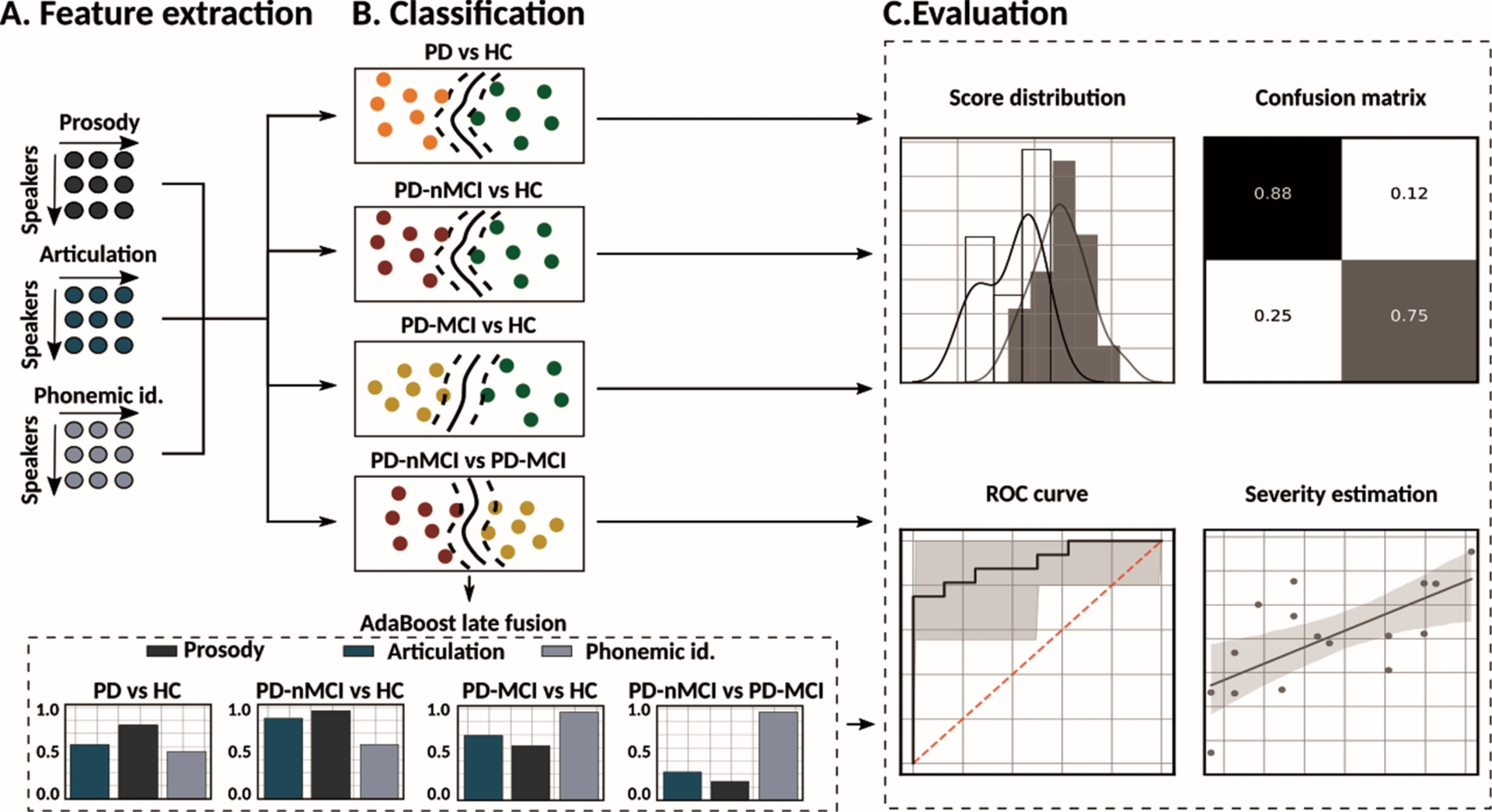Cognitive determinants of dysarthria in Parkinson’s disease: An automated machine learning approach
García, A. M., Arias-Vergara, T., Vásquez Correa, J. C., Nöth, E., Schuster, M., Welch, A., Bocanegra, Y., Baena, A. & Orozco-Arroyave, J. R. (2021). Cognitive determinants of dysarthria in Parkinson’s disease: An automated machine learning approach. Movement Disorders.
En este trabajo mostramos que las manifestaciones predominantes de la disartria en pacientes con enfermedad de Parkinson dependen de factores cognitivos. En pacientes preservados cognitivamente, se observan máximos niveles de identificación respecto de personas sanas mediante medidas acústicas múltiples en tareas de baja demanda cognitiva. En pacientes con deterioro cognitivo leve, la identificación resulta óptima al considerarse una medida de identificabilidad fonémica durante tareas de alta carga cognitiva. Estos resultados surgen de métricas completamente automatizadas, sujetas a análisis por aprendizaje de máquinas, lo cual supone un enfoque objetivo, asequible y escalable para el campo.
Para acceder al artículo, hacé click aquí.
Cognitive determinants of dysarthria in Parkinson’s disease: An automated machine learning approach
García, A. M., Arias-Vergara, T., Vásquez Correa, J. C., Nöth, E., Schuster, M., Welch, A., Bocanegra, Y., Baena, A. & Orozco-Arroyave, J. R. (2021). Cognitive determinants of dysarthria in Parkinson’s disease: An automated machine learning approach. Movement Disorders.
Background: Dysarthric symptoms in Parkinson’s disease (PD) vary greatly across cohorts. Abundant research suggests that such heterogeneity could reflect subject-level and task-related cognitive factors. However, the interplay of these variables during motor speech remains underexplored, let alone by administering validated materials to carefully matched samples with varying cognitive profiles and combining automated tools with machine learning methods. Objective: We aimed to identify which speech dimensions best identify patients with PD in cognitively heterogeneous, cognitively preserved, and cognitively impaired groups through tasks with low (reading) and high (retelling) processing demands. Methods: We used support vector machines to analyze prosodic, articulatory, and phonemic identifiability features. Patient groups were compared with healthy control subjects and against each other in both tasks, using each measure separately and in combination. Results: Relative to control subjects, patients in cognitively heterogeneous and cognitively preserved groups were best discriminated by combined dysarthric signs during reading (accuracy = 84% and 80.2%). Conversely, patients with cognitive impairment were maximally discriminated from control subjects when considering phonemic identifiability during retelling (accuracy = 86.9%). This same pattern maximally distinguished between cognitively spared and impaired patients (accuracy = 72.1%). Also, cognitive (executive) symptom severity was predicted by prosody in cognitively preserved patients and by phonemic identifiability in cognitively heterogeneous and impaired groups. No measure predicted overall motor dysfunction in any group. Conclusions: Predominant dysarthric symptoms appear to be best captured through undemanding tasks in cognitively heterogeneous and preserved cohorts and through cognitively loaded tasks in patients with cognitive impairment. Further applications of this framework could enhance dysarthria assessments in PD.
To access the full paper, please click here.



